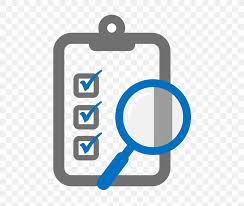Optimizing Lead Nurturing Through Strategic Marketing Automation
In the contemporary digital landscape, effective lead nurturing is paramount for sustained competitive advantage. Manual lead management is inefficient and resource-intensive. Marketing automation offers a transformative solution, streamlining processes and enhancing overall operational efficacy. This article explores fifteen advanced strategies leveraging marketing automation to cultivate high-quality leads, driving conversions and revenue generation. We will define key concepts and illustrate practical applications using established marketing principles and models.
Key Concepts: Lead Nurturing – the process of building relationships with prospects through targeted content and communication to move them through the sales funnel. Marketing Automation – the use of software to automate marketing tasks, such as email marketing, social media posting, and lead scoring. Lead Scoring – a system for assigning numerical values to leads based on their likelihood of conversion. Drip Campaigns – automated sequences of emails sent to leads over time. Customer Relationship Management (CRM) – a system for managing interactions with current and prospective customers.
1. Strategic Lead Segmentation: Employing customer segmentation principles, divide leads into distinct groups based on demographics, firmographics (for B2B), behavioral patterns, and engagement levels. This enables targeted messaging resonating with specific needs and preferences, maximizing engagement and conversion rates. For example, a SaaS company could segment leads by company size, industry, and user role, tailoring messaging to address their unique pain points.
2. Personalized Email Marketing Campaigns: Leverage marketing automation to deliver personalized email sequences, triggered by specific actions (e.g., website form submission, webinar registration). A welcome email series, for instance, provides an immediate, personalized introduction and valuable content, enhancing brand engagement. This strategy aligns with the principles of relationship marketing, building trust and brand affinity.
3. Implementing a Robust Lead Scoring System: Develop a lead scoring model based on predefined criteria (e.g., website activity, email engagement, form completions, downloaded content). This allows prioritization of high-potential leads for more focused nurturing and sales follow-up. This concept applies the principles of predictive modeling, forecasting the likelihood of conversion.
4. Strategic Drip Campaign Development: Design automated drip campaigns that deliver a series of relevant content based on lead segments and scores. This ensures consistent engagement and guides leads through the buyer's journey, applying the principles of content marketing and inbound sales methodologies.
5. Dynamic Content Personalization: Employ marketing automation to display personalized website content and emails, adjusting the message based on individual lead profiles. This dynamic approach leverages the principles of behavioral marketing, optimizing user experience and engagement.
6. Comprehensive Lead Activity Tracking and Analysis: Monitor lead interactions with your website, emails, and social media. This data-driven approach informs the optimization of nurturing strategies, adapting to lead behavior and preferences. This employs principles of web analytics and behavioral targeting.
7. Automated Lead Scoring Alerts: Configure automated notifications to the sales team when leads reach predetermined score thresholds. This enables timely follow-up on high-potential leads, improving sales conversion rates and shortening the sales cycle. This improves sales team efficiency through lead prioritization.
8. Integrated Social Media Automation: Schedule and automate social media posts, track brand mentions, and engage with leads across various platforms. This approach leverages the principles of integrated marketing communications, building brand awareness and fostering lead nurturing across channels.
9. Seamless CRM and Marketing Automation Integration: Integrate your CRM with your marketing automation platform for a unified view of lead interactions and data. This holistic approach streamlines processes, enhances data accuracy, and improves the effectiveness of nurturing efforts. This enables a 360-degree view of the customer, a core principle in CRM management.
10. A/B Testing for Continuous Optimization: Use A/B testing to experiment with different campaign elements (subject lines, email content, landing pages) and identify optimal variations. This data-driven approach continually refines campaign performance, aligning with the principles of experimental design and data-driven decision-making.
11. Adaptive Lead Scoring Model Refinement: Regularly review and adjust lead scoring criteria based on sales team feedback and conversion data. This ensures the scoring system remains accurate and aligned with business objectives. This ensures the lead scoring model remains relevant and effective over time.
12. Targeted Retargeting Advertising Campaigns: Utilize marketing automation to re-engage leads with customized ads across various platforms. This keeps your brand top-of-mind, fostering continued engagement and movement through the sales funnel. This utilizes the principles of retargeting and programmatic advertising.
13. Landing Page Optimization: Analyze landing page performance metrics (bounce rates, conversion rates) and optimize for improved lead capture and nurturing. This improves the effectiveness of marketing campaigns by enhancing the user experience.
14. Automated Lead Qualification Workflows: Implement automated workflows that qualify leads based on pre-defined criteria (job title, company size, industry). This prioritizes qualified leads for sales follow-up, enhancing sales efficiency and ROI.
15. Continuous Monitoring and Adaptation: Regularly review marketing automation strategies and metrics to identify areas for improvement. Adapt your approach based on performance data and emerging marketing trends. This ensures ongoing optimization and responsiveness to market dynamics.
Conclusions and Recommendations
Effective marketing automation significantly enhances lead nurturing, increasing efficiency, and driving improved conversion rates. Strategic segmentation, personalized email marketing, and robust lead scoring are crucial for success. Continuous monitoring, A/B testing, and adaptive refinement of strategies are essential for long-term optimization. Further research could explore the impact of AI-driven personalization and predictive analytics on lead nurturing effectiveness. The integration of marketing automation with sales processes warrants investigation for enhanced efficiency and improved sales outcomes. This integrated approach promises significant ROI through optimized resource allocation and improved lead conversion rates.
Reader Pool: How might the integration of artificial intelligence enhance the effectiveness of the lead nurturing strategies outlined in this article?





No comments yet. Be the first to share your thoughts!